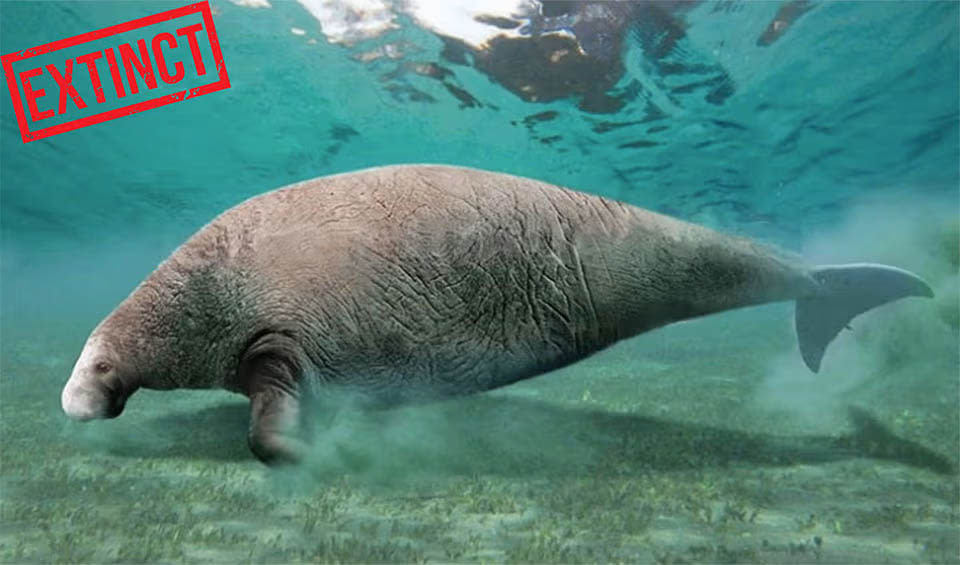Steller’s sea cow, named after the naturalist Georg Wilhelm Steller, who first documented it in the 18th century, represents one of the most tragic tales of discovery leading to extinction in the annals of natural history. This colossal marine mammal, with an estimated mass of 11 tons and lengths reaching up to 10 meters, was a gentle giant of the seas, spending much of its time serenely floating in the cold waters of the North Pacific, specifically around the Commander Islands.
Steller’s observations provided the only scientific account of these animals in their natural habitat, portraying them as social creatures that congregated in groups. Their peaceful and unhurried existence, however, made them easy targets for hunters and sailors who, shortly after the species was described, began to hunt them extensively. The appeal of Steller’s sea cow was not just limited to the novelty of its discovery; its meat was highly prized for its delicious taste, a fact that Steller himself noted, leading to a frenzied hunt for these animals by those who ventured into their remote habitats.
Moreover, the fur trade, thriving during this period, found another commodity in Steller’s sea cow. The thick blubber underneath their skin, while providing insulation to the animals in the cold northern waters, became a coveted resource for fur merchants. This blubber was processed into oil, which was found to be used in lamps and cooking, further intensifying the hunting pressure on the population. The exploitation was so intense that, incredibly, within approximately 30 years of their discovery, Steller’s sea cow was hunted to extinction.
Distribution
 Bering sea
Bering sea Official estimate
Official estimate
 Pacific ocean
Pacific ocean Official estimate
Official estimate
 Russia
Russia Official estimate
Official estimate
 United States
United States Official estimate
Official estimate
Did you know?
- Only sirenian known to have lived in cold waters.
Anything we've missed?
Help us improve this page by suggesting edits. Glory never dies!
Suggest an editGet to know me
Terrestrial / Aquatic
Altricial / Precocial
Polygamous / Monogamous
Dimorphic (size) / Monomorphic
Active: Diurnal / Nocturnal
Social behavior: Solitary / Pack / Herd / Group
Diet: Carnivore / Herbivore / Omnivore / Piscivorous / Insectivore
Migratory: Yes / No
Domesticated: Yes / No
Dangerous: Yes / No





